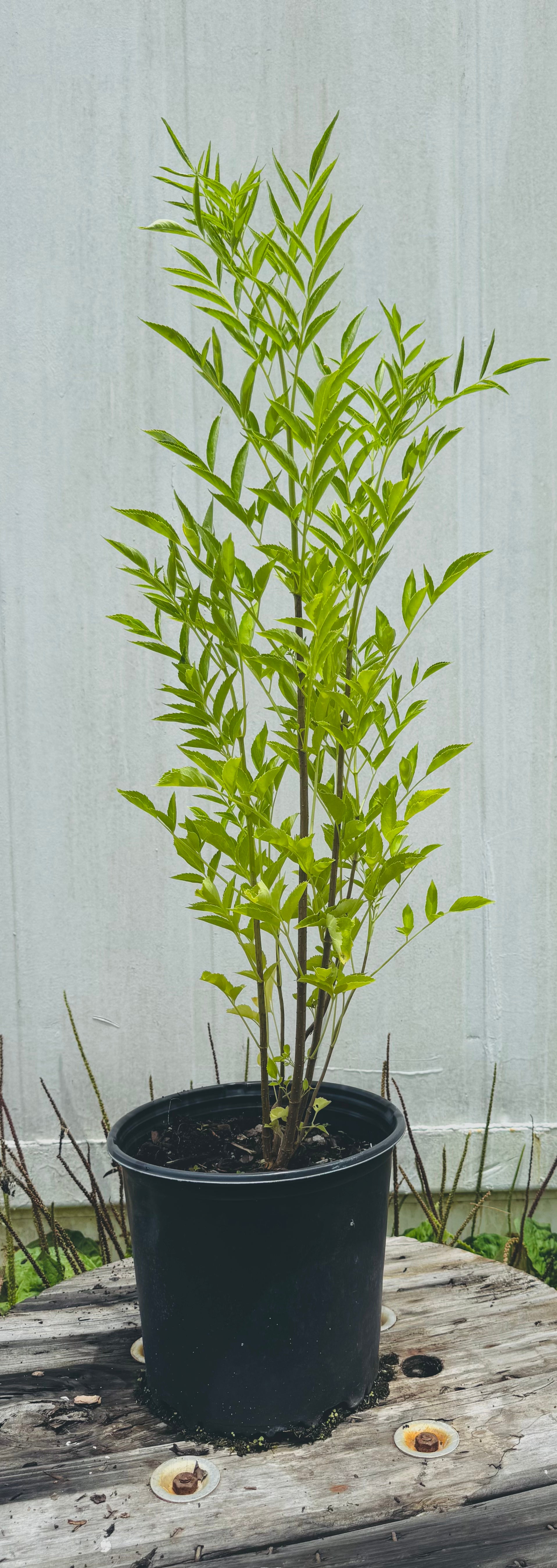
Florida Native Elderberry (Sambucus Nigra) 1 & 3 Gallon
Elderberry (Sambucus nigra)
USDA Hardiness Zones: 3–9
Looking to restore land affected by erosion? Native Elderberry is an excellent choice. With a fast-growing, fibrous root system, it helps stabilize disturbed soils—especially along slopes, streambanks, and low-lying areas.
In addition to erosion control, Elderberry attracts pollinators, provides habitat, and produces nutrient-rich berries enjoyed by both wildlife and people. It's a hardy, adaptable plant that thrives across a wide range of Florida conditions.
Planting & Care Guide
Location
Choose a site with full sun to partial shade (at least 4–6 hours of sunlight daily).
Ideal for moist lowlands, slopes, or areas with seasonal water flow.
Spacing
Plant 6–10 feet apart to allow for mature spread and good air circulation.
Soil Preparation
Loosen soil to a depth of 12–18 inches.
Incorporate compost or organic matter to improve drainage and nutrient content, especially in sandy or compacted soils.
Planting Depth
Place the plant at the same depth it was in the container.
Ensure the crown (base of the stem) remains above the soil line.
Watering
Water thoroughly after planting and keep soil consistently moist during the first 6–12 weeks.
Maintain a regular watering schedule in the first year to establish strong roots.
Mulching
Apply 2–3 inches of mulch around the base (without touching the stem) to help retain moisture, suppress weeds, and regulate soil temperature.
Support
Generally not needed, but young plants may benefit from staking in windy or sloped areas.
Soil Requirements
-
Prefers moist, well-drained soil
-
Tolerates clay, loam, or sandy soils
-
Best performance in slightly acidic to neutral pH (5.5–6.5)
-
Avoid compacted or overly dry soils for long-term health
Fertilizing Elderberry
Fertilizer Type
Apply a balanced, slow-release fertilizer (e.g., 10-10-10 or 8-8-8) or well-aged compost to enrich the soil.
When to Fertilize
-
Early spring before new growth begins
-
Optional second application in mid-summer, particularly for young or fruiting plants
How Much to Apply
Use ½ to 1 pound per plant, depending on size and maturity. Avoid over-fertilizing, as excess nitrogen can reduce fruit production.
Application Tips
Spread fertilizer in a wide ring around the base—not touching the trunk—and water thoroughly to help nutrients absorb into the root zone.
For restoration and erosion projects, Elderberry is a native solution that supports soil health, habitat creation, and long-term landscape resilience.
Flowing Well Tree Farm proudly offers Florida-grown Elderberry in 1 and 3-gallon sizes, ideal for restoration professionals, municipalities, and homeowners alike.





